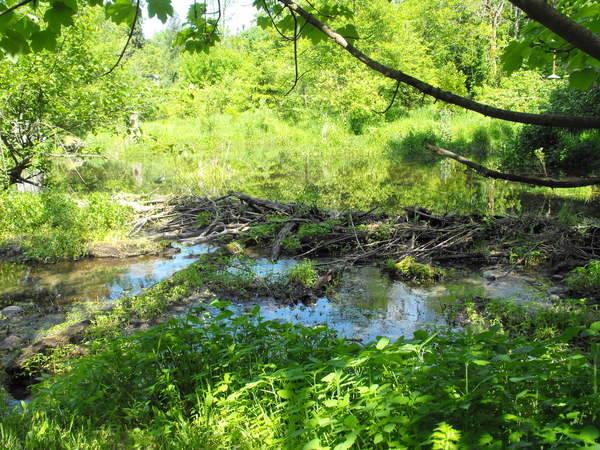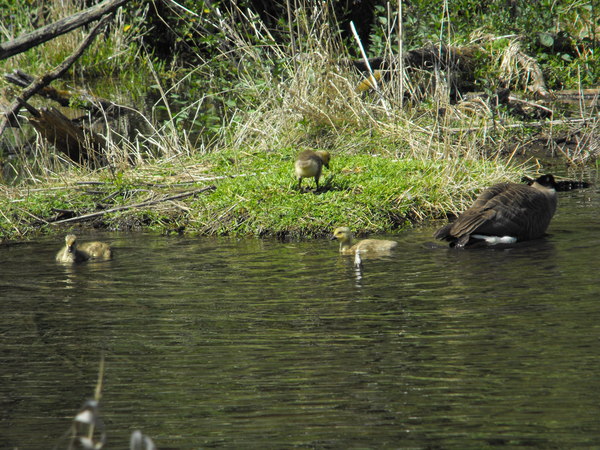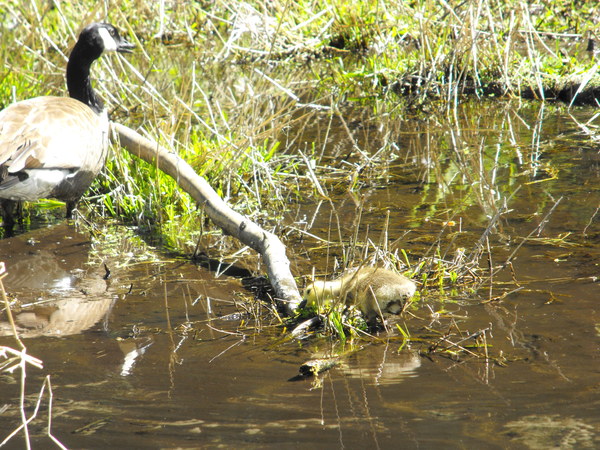In typical fashion spring in Oregon is well- predictably, unpredictable. We broke records for the longest stretch of dry weather for the month of May- only followed by wet windy weather which may send non-native residents running for their umbrellas. But all together the month has averaged out to be a 'typical' beautiful spring here in the Northwest. The canyon is a beautiful place to witness the changes in seasons, right now the lake is swarming with baby ducks, and geese-
Geese are an interesting beast- growing up in the Northwest I was never in awe of the presence of geese- they seemed to be everywhere, all the time. And in the canyon they seem to frolic and honk to no end- intriguing and entertaining for kids of all ages- but not a feature alone that makes the canyon different from your city park…
But this is where this story evolves into something special-
Alone geese are geese- doing geese things, but in an ecosystem like the Reed canyon- we start to see how relationships between different creatures start to intertwine, and you could observe the benefits of letting nature take its natural course. Next time you visit Reed canyon and you find yourself on the island below the Chemistry building- take a look to the NE- I've been watching our resident beavers construct a very impressive dam, trapping the spring water from the east, consequently raising the water level up over a foot in some of the areas closest to the dam. The water level itself seems to go up and down weekly depending on the activity of the beavers and their ability to constantly plug the holes in their dam. Some may argue that the damming of the springs will cause negative effects on the system by trapping the cold, clean spring water allowing it to warm up during the later days of summer.. And others can argue that the ability to create back water in what was once a marsh- creates opportunities for increased biodiversity- and further water cleansing. Beaver dams have also been shown to be beneficial to frog populations, likely because they provide protected areas for embryos and tadpoles, to mature in warmer, well-oxygenated water. (Which has been highlighted as a concern in recent thesis studies of the canyon.) In early spring the water is too cold and is viewed as a problem for acceptable frog development).
A second benefit that I've been observing during this time period is that the area that is now flooded- is an area that we have found most difficult to rehabilitate-A well established pocket of Reed Canary Grass (Phalaris arundinacea)- 'no relation to the college'
Since we have chosen to not use herbicides in our restoration efforts the persistent nature of this bunch-grass has made it difficult to establish native flowering shrubs and forbs. We've been cutting it, pulling it and trying to out compete it with larger willow, and dogwood cuttings. In other areas downstream that lack constant management- this grass can create a rhizome layer choking water and animal passage, with a grass blades 8 feet tall.
So back to the goose story- with the dam now structurally sound- the area infected with this grass has now been flooded- in some cases drowning the grass-crown. This back water is now inviting to a diverse group of water fowl that prior couldn't walk though this area- allowing them to swim through and feed on the new nutrient-rich meristems, essentially grazing the grass continuously and limiting this plants ability to grow and spread…and seed.
As we see here these young geese are welcomed stewards of the canyon- being taught by their proud parents to protect their home and assist in the ongoing restoration efforts.
Using native wildlife as a 'tool' for restoration? This will be a very interesting study to watch unfold before our eyes…
Join the conversation on 'Reed Canyon' Facebook page- share your stories and pictures with others in the community whom share your feelings about Reed College Canyon.


